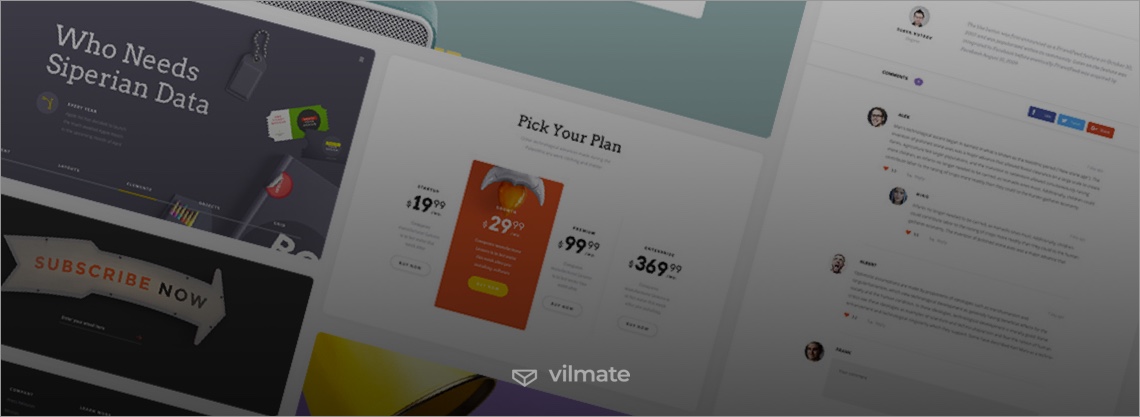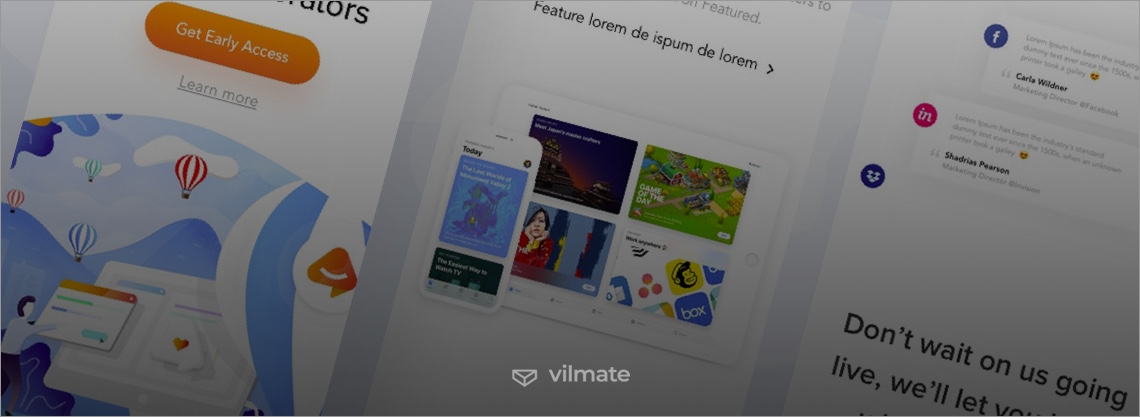Businesses will never give up their effort to find new ways of engaging customers and progressive app development is a new approach that should assist them in arriving at this goal.
It is no secret that checking for updates or googling things on smartphones is now much more convenient and popular among Internet users than using a desktop computer or a laptop when going online. Regardless of what operating system a mobile device is running, it is necessary to deliver user-friendly experience meeting thus market competition. Companies, aiming at creating a quality product and trying to please their customers, appreciate the necessity to cover as many platforms as they could and end up developing three applications (for the web, iOS, and Android), to say the least.
Given that Progressive Web Apps, or PWAs, contain features of both websites and pure native apps, they keep one step ahead. As applications that are downloaded from the Internet, progressive web apps are easy for users to access and for devices to get them running. They work across all kinds of devices and platforms as distinct from the OS-specific native applications.
Besides, if the current trend continues, users will spend progressively less and less time on mobile apps or searching for new ones. Yet, we must admit that opening a page to start browsing the web, we often find ourselves going down the rabbit hole. That is exactly the point where businesses making use of modern web technologies may take advantage of an opportunity and start working on their first progressive web app. Therefore, why not make an effort to create an app-like experience as long as the IT industry offers it?
Benefits of Progressive Web Apps
Before diving into PWA development (actually, into any new type of software development), as a rule, one is wondering in what way to benefit from it. It is important to consider the pros and cons of PWA yet before you start. Although a thorough investigation of the issue may make things clear, it is usually preceded by certain expectations regarding the potential benefits. So, how many of them are met in the case of progressive web development?
1. Reduced friction.
Any hint of friction and users’ attention is distracted. Smart businesses should avoid it at any point of customers’ interaction with their product. Nobody likes waiting in line. It is the same with e-services. Delivering them, a provider must know that fast-loading pages are the key.
The global developer community truly believes in the PWA’s success. Google even published a checklist to follow in pursuit of building an application whose feel would be fast and fluid. They explain there how to improve those points that are beyond the Lighthouse’s scope.
However, the fact that to start working with a PWA, a user does not have to install a native app from an app store, which is in itself a high-friction action, implies a dramatic increase in speed and quality.

2. Extensive availability.
We are spoilt with all the modern amenities. PWAs, unlike native applications, are accessed on any OS and on any device, on an unreliable network or even offline. This gives us as users the feeling of inner peace, which is generated from the certainty. It is all but certain that a PWA will be available anyway.
Many places, formerly occupied by mobile apps only, are hosting PWAs now. Besides, the progressiveness is the key to creating a feature-complete website version, to creating a PWA site. Consequently, when you are browsing web pages on your smartphone, you can enjoy more than their standard limited functionality.
Thus the web is turning into a platform for apps, into its advanced version which does not involve the app installation. Apart from that, most advantages of PWAs follow the pattern established by the applications developed for specific platforms. Although the latter have benefits to boast of, so do the former. Both are powered up with a push notifications feature and have their placement on the screen. The same goes for their velocity and responsiveness.
3. Ultimate user experience.
Everybody who has ever double-clicked the Internet browser icon knows full well what bad user experience is. Imagine you click a button on website X, wait, and… nothing happens. It is not a perfect scenario, for sure. Ideally, users should not notice that the action is going through several stages when being completed. It must be instant. But trying to be productive and fast while dealing with the mobile web is still often a thankless job. This is how you might be missing out on potential customers and decreasing conversions.
With PWAs, you are very likely to engage and retain users who were already coming to your platform but were used to just passing by. Since it is in PWAs’ nature to be less volatile than single web pages but more available than native applications, features of progressive web apps taken together are providing a deeply engaging experience instantly upon customers’ landing on a website.
Instead of being obliged to take a high-friction step of installing an app, people can get a native-like experience from the web, which is yielding more engagement. Namely, when a cellular tower becomes overloaded, actions taken will be completed no matter how high the current connection quality is. A nice bonus to those in search of user-oriented web apps, isn’t it?
How a PWA works
The beauty of a PWA technology is that it serves as a means for building apps that at the same time unites the best of what the web and OS-specific apps have. The concepts to focus on here are speed, integration, reliability, and engagement. But how can you bring them to fruition creating your very first progressive web app? What are these ‘lightweight web pages’ like in action? How to use a PWA?

First, with a PWA, there is a link to be followed. Once a user completes this low-friction step and a PWA is installed, a so-called provider(i.e. a domain owner) is able to interact with users directly and alert them about new information via push notifications, even with the browser is closed.
In sum, it takes three simple steps to connect a PWA to your device:
1. Visit a website.
2. Add a PWA icon to the home screen of a smartphone or a computer.
3. Tap the icon to open an app and start working.
Before prompting users to complete step 2, different browsers offer certain sets of criteria to be met. Eventually, when Chrome, or any alternative browser supporting PWAs, determines it is time to add the icon, you will be allowed to do so.
How to build a Progressive Web App
Now that there is no doubt left as for why creating a PWA is a good idea, let’s consider how exactly it can be done so that to be able to naturally go over to the question of how to implement a PWA. These are some basic points to emphasize:
1. Service worker. Just as every house has its solid foundation, so PWAs’ basis is SW. It stands behind nearly all the above capabilities. Traditionally, every request a client makes must go to the network. It involves waiting. Moreover, if the network fails, repairing a connection may take long, not to mention the risk of losing data. In the case of PWAs, users’ requests go to SW first. Once all needed resources are cached to be used when necessary, SW redirects the requests to either of the two destinations: to the cache storage(if this is the first time the page is being reached) or to the network directly. So, creating a service worker by writing a JavaScript code is the initial step.
2. Secure connections. Ensuring security is the only possible course of action. The SSL protocol must be used to transmit data of the app you are determined to deploy. Serving a site on HTTPS is an obligatory condition for SW registration.
3. CacheStorage API. For instance, if you come up with a list of URLs to be cached, a SW will send them to CacheStorage instead of forwarding to the HTTP browser cache. API helps to find a place to store information from web pages on users’ mobile devices or desktops which allows viewing them offline thereafter.
4. An application shell architecture. After the web page is transformed into its lightweight version, it gets cached. With an app shell architecture, the page is presented as a ‘shell’ to be filled with content once the network allows doing so. All the user needs to do to have the basic interface elements load speed boosted is to visit the website.

Nearly all these steps are somehow related to caching from which other benefits are stemming.
When it comes down to the PWA installation, it is executed similarly to its implementation and has the form of a three-stage process:
1. Registration of a SW.
2. Creation and configuration of a JSON file (web-app manifest file.)
3. Linking to this file from the web application.
The manifest should contain the key information about an application. Ultimately, the JSON file let the browser ‘know’ that the app must operate as a PWA.
Conclusion
Breaking into with a new app is known to be challenging and no doubt costly. In fact, when choosing the PWA approach, you do not need to go out of your way.
Forbes, Twitter Lite, the Washington Post, Ola Cabs, Lyft, Financial Times, and AliExpress — the list is not yet exhaustive. Widely recognized companies rely upon progressive web apps. They admit that creating a mobile app is still no small task, which is rather unlikely to be rewarding and that it cannot guarantee success. On the other hand, launching progressive app development, your business can expect to get a web app that works even when users are offline and boost the overall level of engagement. Many web developers are excited about all the changes taking place in the industry. So, why not try to find out what is bringing it about and take a step towards delivering an allegedly better web experience?

© 2018, Vilmate LLC




